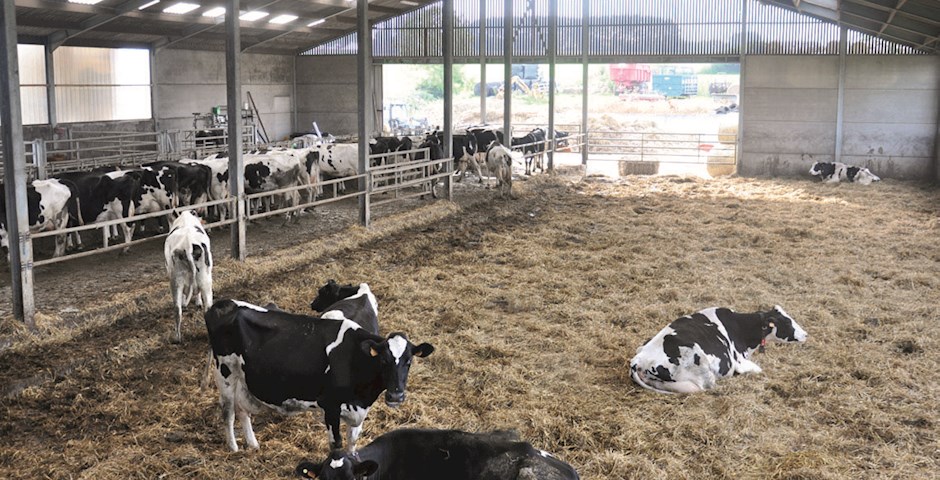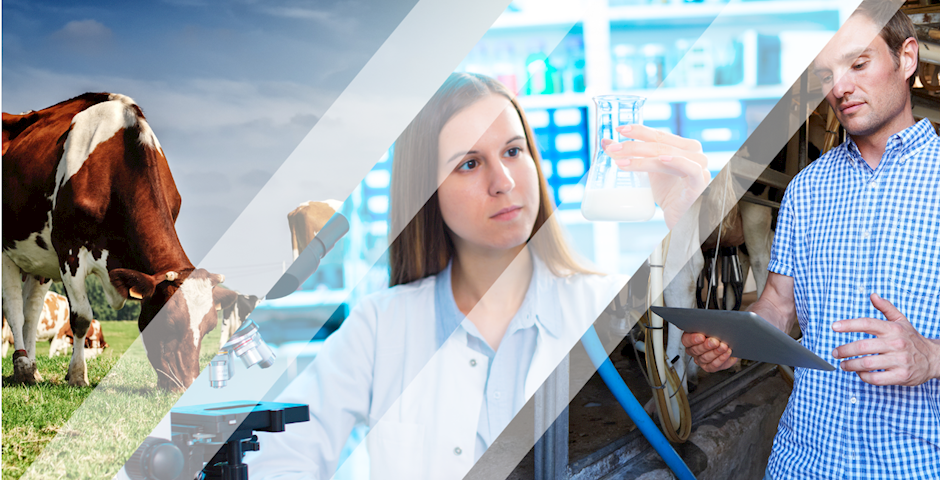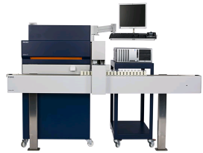North-West Europe’s dairy sector produces 60% of the European milk yet it remains very heterogeneous: small vs big farms, conventional vs organics ones. In order to make the sector more sustainable, the OptiMIR project developed tools to monitor cows’ health (including parameters such as fertility). Gathering partners from 6 countries (Belgium, France, Germany, Ireland, Luxembourg, and the UK), with a total budget of about 7.5 million euros, 17 research organisations and milk recording organisations (which provide data to both farmers and milk buyers) worked together between 2009 and 2015 to analyse data from cow milk variations. OptiMIR developed a standardisation method for animal screening as well as for data collection, relying on a network of over 100 machines from different countries and brands (so each machine has specific features). When recording (e.g., of a disease) is done in a harmonised way, statistical information can be compared across NWE. The project built a unique transnational database which has become a powerful statistical tool to predict and anticipate potential health issues (such as detecting a cow’s pregnancy or identifying hormonal and metabolic disorders).
Holy cow! How Interreg NWE helps the dairy sector strive towards sustainability

Provided with such information, farmers can make more informed decisions when it comes to a cow’s health and take appropriate, individualised measures such as adapting feeding to the animal’s energetic needs to prevent clinical issues. Early diagnosis of diseases is also made possible, leading to a reduced use of antibiotics to treat cows and optimised veterinarian interventions. By switching from curative to preventive care, production costs are reduced, with savings over a 100 euros per cow each year, so a total of about 500 million euros in the whole of North-West Europe, and increased profitability for farmers.
Moreover, when milk quotas were abolished in 2015, quality requirements from milk buyers increased. “Thanks to OptMIR, farmers have been more equipped to meet those requirements and therefore have had more leverage to negotiate prices”, explains Christophe Lecomte from France Conseil Elevage, a partner in the project.

Not only was the project beneficial to farmers but partners involved in OptMIR clearly identified the added value of transnational cooperation. Advantages were both tangible and intangible. French partners eagerly report learning about the Belgian solution-oriented approach; more concretely, they also took on board the German prediction models related to risks of udder infection. Organisations involved in OptiMIR were keen to keep on learning from one another beyond the project’s lifetime, and to this end set up a European economic interest grouping (EEIG) when OptMIR ended in 2015. An EEIG is a legal entity fostered by the EU for companies to cooperate across borders and which makes it easier for them to do business together. “The EEIG aims at raising awareness about the standardisation process, strive to improve it and roll out the new working routines”, describes Julie Leblois, its manager.
Gathering 13 milk recording organisations, the grouping called European Milk Recording has already reached out to 70 000 farmers for a total of 5 million cows, with a direct, long lasting impact on dairy farm management, long after the end of the Interreg NWE funded project. Milk recording organisations in Bavaria, Switzerland, but also Austria have shown interest in the initiative.
The grouping has also been collaborating with milking machines manufacturers to exchange data, something that would not have been possible if resources from different countries had not been pulled together inside the EEIG.
The Interreg VB HappyMoo project was born out of shared interest among members of the EEIG. It gathers 13 partners from 7 countries (Switzerland comes in addition of those involved in OptiMIR) and has a total budget of over 4 million euros until end 2022. Building on OptiMIR’s methodology, HappyMoo focuses on data related to cows’ well-being, going beyond criteria only related to the cowshed environment. Four axes are being looked at: energetic needs (for hunger-free cows), foot problems, udder tissue inflammation (for disease-free animals), and stress. Based on predictions related to both the quantity and quality of milk a cow will produce, milk recording associations can advise farmers on how to manage their cattle (including animal selection for reproduction purposes). With the digital revolution under way, HappyMoo intends to automatise all steps of the process, from milk analysis to decision making through animal monitoring. Tools are developed by IT specialists and feedback is provided by the end-users, farmers, in a co-design process. Farmers but also veterinarians and other workers as well as students are trained to use the applications. Cows’ welfare can then be assessed on a regular basis and in a cost-effective way.

"Interreg North-West Europe’s OptMIR served as a springboard for the creation of the European Milk Recording EEIG in the framework of which transnational cooperation was deepened"
Christophe Lecomte from France Conseil Elevage
A healthier and better cow produces a more qualitative milk, for the benefit of both the farmers and consumers so ultimately of European citizens. A more sustainable dairy sector also helps safeguarding farming activities in rural areas, increases the territory’s food self-sufficiency and contributed to improving food chain safety.
Both Interreg NWE OptiMIR and HappyMoo projects have been contributing to a better environment as well, with reduced methane emissions, thus testifying of positive and constructive links between two generations of Interreg NWE programmes (IVB then and now VB). This demonstrates that partnerships can live on beyond the end of EU-funded projects and have successful, long term effects.
Picture 1: © WALLONIE ELEVAGES
Pictures 2 & 3: © HappyMoo project
